Horizon’s Dr. Elisabet Sobeck, designer of Zero Dawn and savior of humanity
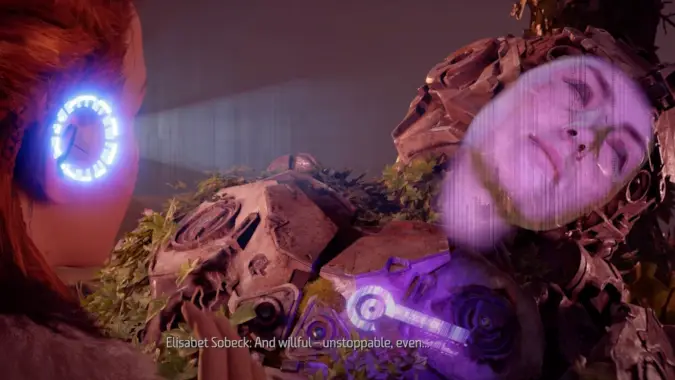
Though we never once meet her, Dr. Elisabet Sobeck is the driving force of the world of Horizon Zero Dawn and its sequel Forbidden West. A brilliant scientist, Sobeck used the tools of man’s ingenuity to repair the damage they had inflicted on the world. She built green robots that helped repair ecological damage and avert the disaster of a global climate crisis.
And for a time, she succeeded, working at Faro Automated Solutions (FAS) to develop technologies that would safeguard the planet. But then came the Faro Plague, a swarm of out-of-control military robots that indiscriminately destroyed everything in front of them. The swarm was unstoppable, and Dr. Sobeck was forced to make a terrible choice: to put up a hopeless fight against the machines or to let the machines win… while trying to preserve the future with Project Zero Dawn.
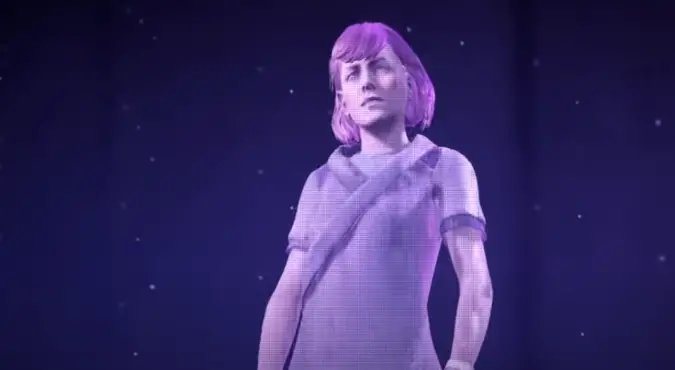
Sobeck dedicated herself to helping humanity
Elisabet Sobeck was born on March 11, 2020, in Carson City, Nevada, and was something of a scientific prodigy. At the age of six, she burned down a tree at her family home while experimenting with a kid’s science kit — it was an accident, but her mother showed her the remains of chicks that had been killed in the fire. She told Elisabet that her intelligence had to be used to make the world a better place or it was worthless. This seems to have been a formative moment for Sobeck, who reminisces on it years later, shortly before her own death. Sobeck would become ardent in her pursuit of technology for good.
At 13, she earned a Bachelor’s Degree in Experimental Physics and Computer Science from Stanford, and then at 20 earned a PhD in Artificial Intelligence Design and Robotics from Carnegie-Mellon. Ted Faro of Faro Automated Solutions hired her to work on his green robotics initiative, and by age 22 Dr. Sobeck was the Chief Scientist at FAS — and responsible for much of the technology that earned Ted Faro many accolades, including the unofficial title of “the man who saved the world.”
It would be fairer to say that all Ted Faro did was find the actual person who could save the world and give her the resources to do it. It was Elisabet’s work that led to the Claw-Back decade, the period between 2040 and 2050 where much of the ecological damage wrought on the world was finally halted, and even reversed.
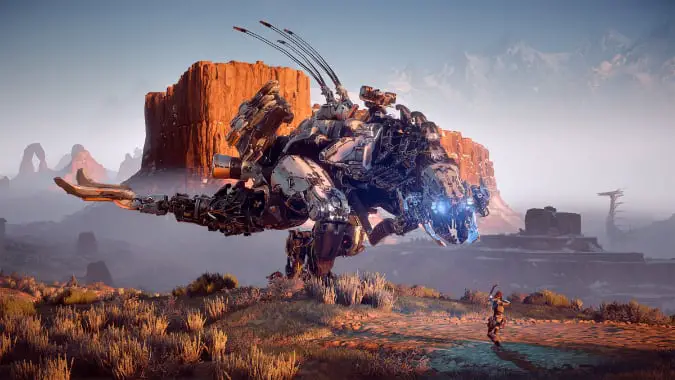
The Faro Plague of military machines threatens the world
When Faro decided to take FAS into military robots, Elisabet resigned in protest. She wanted no part in making war machines, and started her own green tech firm called Miriam Technologies. Despite an endless stream of litigation from FAS, Miriam Technologies became the industry leader in green robotics, earning Sobeck the 2053 Nobel Prize for Physics among other accolades. FAS grew mammoth off of the sale of military robots, but Sobeck put all of her focus into trying to make a better world with her new company.
But in 2064, Ted Faro called her out of the blue, offering to drop all of his lawsuits if she would only come and speak to him in person. What was so important that Faro would make an offer like that? When Sobeck arrived, she found out that Faro’s military robots, which had made him the wealthiest human being to ever live, were out of control and ignoring all shutdown commands.
The FAS Chariot line of robots had the ability to self-replicate and could convert biomatter — plants, animals, humans — into fuel. These machines were designed to be unstoppable. If they were damaged, they could repair themselves or build new units. If they didn’t have fuel, they could destroy whatever was in front of them and turn it into fuel, like a swarm of metal locusts. If attacked by other, less sophisticated robots, they could hack them and add them to the swarm. Much of the military had been automated, leaving few resources to fight such an enemy — and it would take hundreds of years to break the machines’ encryption and force them to shut down.
The situation was dire, and Faro had brought Sobeck in hoping she would come up with a way to stop the machines. Instead, she coldly informed him of the truth: there was no way to stop these rogue machines, which would soon come to be known as the “Faro Plague.” In 15 months, she calculated that Earth would be stripped bare to fuel the steadily growing numbers of Chariot robots — and there was no way to stop it.
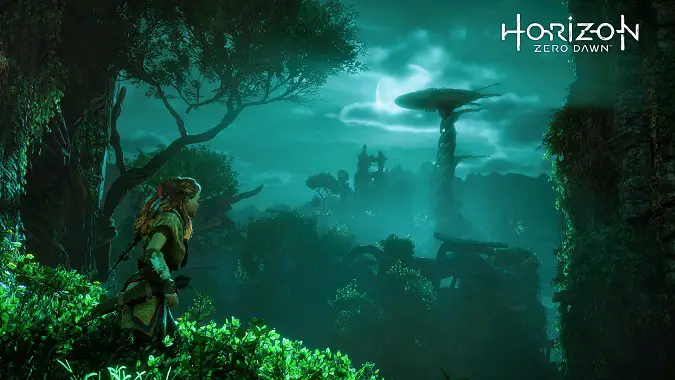
Project Zero Dawn was a cure almost as bad as the disease
Still, Faro was counting on Sobeck to fix the problem, and promised to implement any solution she proposed. She came back with an answer in three days, but her solution was a hard pill to swallow, and Faro balked. Project Zero Dawn, he said, was almost as monstrous as the renegade robots themselves. But Sobeck wouldn’t let him back out of his promise. Faro could either agree to support it, or when she talked to the Joint Chiefs at US Robot Command about the problem, she would let them know exactly what he’d done — and how he wasn’t willing to help fix it. Since Sobeck was already on her way to talk to them, Faro didn’t have a lot of time to wiggle out of the bargain.
Thus Elisabet Sobeck blackmailed her former boss into signing off on Zero Dawn.
The people of Earth would be sold a story of a secret project that could contain and defeat the Faro Plague before it wiped out all life. General Aaron Herres, Chairman of the Joint Chiefs of Staff, called it Operation: Enduring Victory, and it involved throwing everything humanity had at the robots to buy time for Zero Dawn to be completed.
Sobeck knew there was no way to defeat the robots. Faro knew there was no way to defeat the robots. Herres knew there was no way to defeat the robots. There was no hope for the people of today… but there might be hope for people of the future. And Sobeck’s plan was the only way humanity might survive extinction.
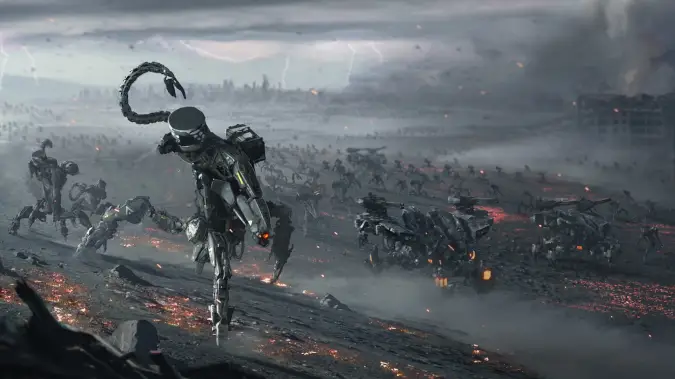
Project Zero Dawn was never about destroying the enemy
Zero Dawn was no super weapon: instead, it was a complex series of globally distributed vaults housing a vast and sophisticated terraforming network of machines, controlled by the most complex AI ever created, which had subordinate functions that would in themselves be more complex than most AIs that currently existed. The system was designed to hack through the Faro robots security and shut them down, then terraform the Earth into a livable biosphere again, then and educate new humans to inhabit this verdant future world.
Each subordinate function had a specific role. MINERVA would spend hundreds of years hacking the Faro robots and shutting them down; ARTEMIS and DEMETER would recreate animals and plants fro vast databanks of genetic material; POSEIDON and AETHER would clean the water and air of the pollutants spread by the Faro Plague. If the terraforming system went wrong, HADES would destroy everything again so the system could start fresh and attempt to create a viable biosphere. And when Earth was ready, ELEUTHIA would use cryogenically frozen embryos to restore the human race, and APOLLO would be a vast repository of all human knowledge to educate future generations. The AI that would control it all was called GAIA, and she was masterwork of Elisabet Sobeck’s career. These AIs had to work flawlessly without any human intervention, because there would be no humans to intervene.
It was a massive technical undertaking, and there were only 15 months to complete it. The best experts in the world were brought in (willingly or not) and told exactly what was to come: how there was no hope of survival for anything currently alive, and that only with Zero Dawn would there be a chance for life after the Faro Plague had consumed all living things. If they agreed to join Zero Dawn and work on the project, they would be welcomed as colleagues, and would be able to live out the rest of their lives in relative comfort in hidden facilities until their deaths.
If they refused, they would either be confined indefinitely so they could not tell the truth about the hopelessness of the war against the machines, or they could choose medical euthanasia. There was no way out of Zero Dawn — in order for the project to succeed, absolute secrecy had to be maintained, so that the doomed humans of the 21st century would keep fighting, delaying the Faro Plague’s victory so that Zero Dawn could be completed.
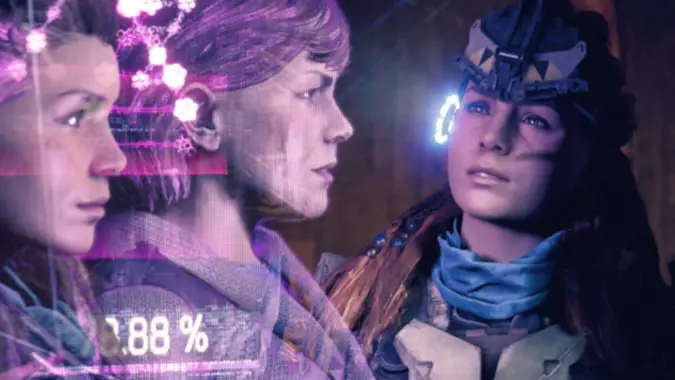
Elisabet Sobeck dies… and is reborn (or at least cloned)
GAIA was Elisabet Sobeck’s greatest achievement, but it was also her last. On the final day of Zero Dawn, when the network was to go dormant and wait out the Faro plague, a misalignment of the bunker doors that were to keep the swarms from detecting GAIA necessitated someone going outside and re-aligning the seal by hand. This person would be trapped outside, where eventually they would die, killed by the degrading environment or by the Faro robots. And so, Elisabet stepped out to seal the bunker, knowing it would cost her life.
Such was the end of Elisabet Sobeck. The woman who burned down a tree and learned how precious life was sacrificed herself to save GAIA. She paid the price she had asked from so many others to ensure that there was a future for humanity.
In a real way, Sobeck actually saved the world — twice. And even after her death, she would do so again. When a mysterious signal awoke GAIA’s subordinate functions, letting them run loose on their own without her oversight. HADES, designed to destroy, was as much a threat to the new world as the Faro Plague was to the old, and GAIA destroyed herself in order to stop HADES from destroying everything.
But before taking this step, GAIA had a clone of Elisabet made from stored genetic material, believing that she could once again save the world. That clone became Aloy, the hero of Horizon Zero Dawn and its sequel Horizon Forbidden West, who would save the world yet a third time… but that’s another story.
Please consider supporting our Patreon!
Join the Discussion
Blizzard Watch is a safe space for all readers. By leaving comments on this site you agree to follow our commenting and community guidelines.
 @MatthewWRossi
@MatthewWRossi



